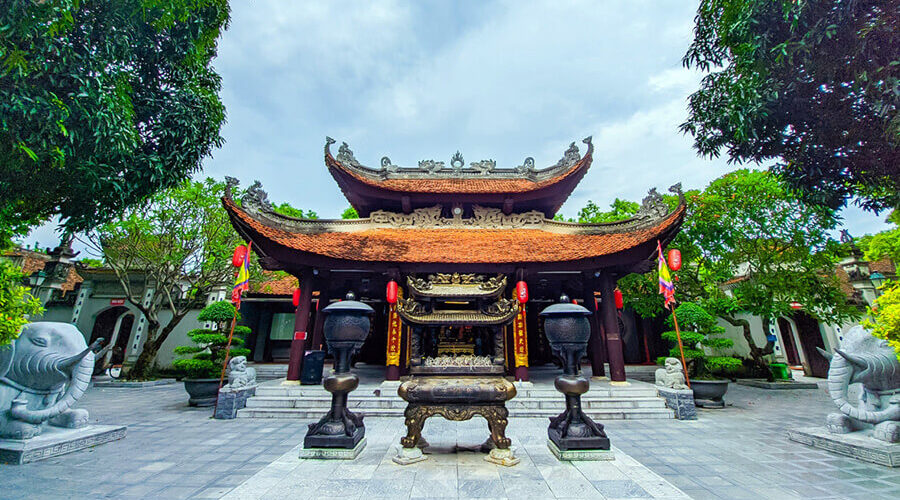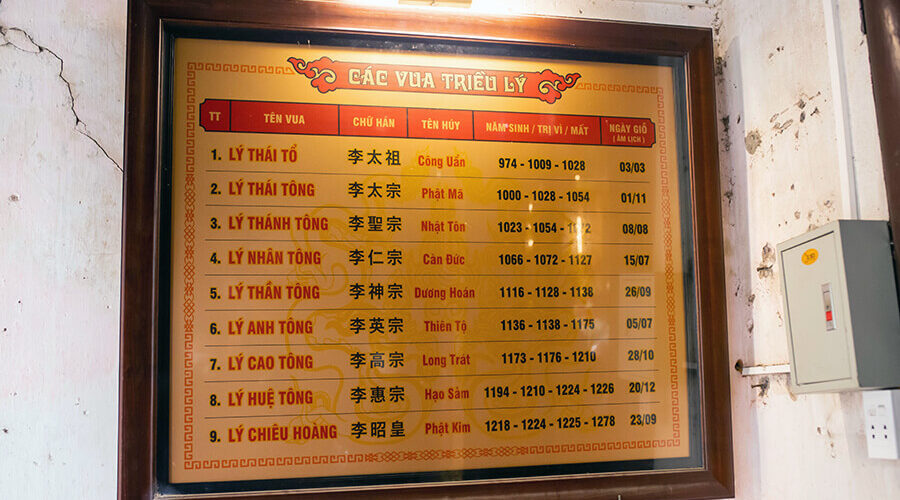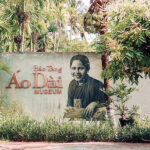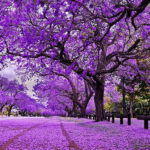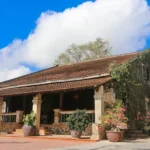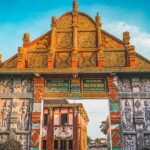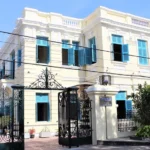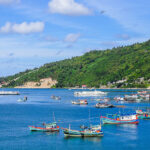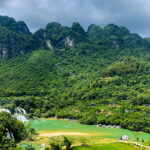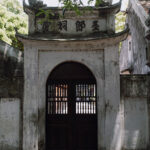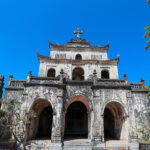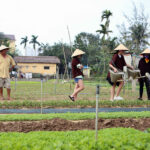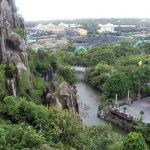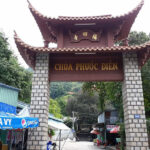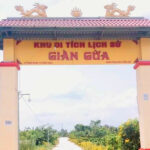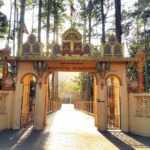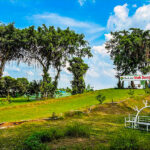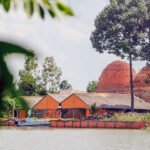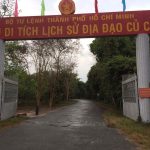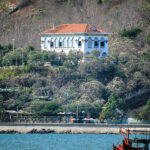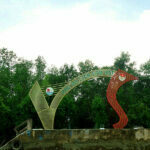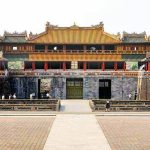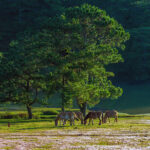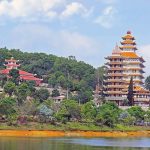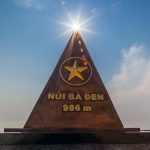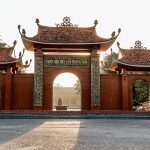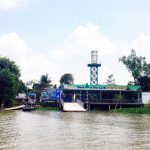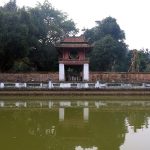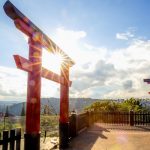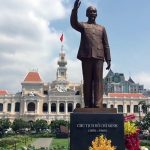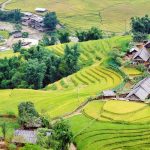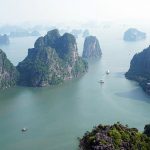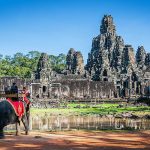When mentioning Bac Ninh, tourists often think of traditional craft villages, and historical and cultural relics with long-standing values. Among them, Do Temple is a destination not to be missed. This place is known as the “capital of Ly – Tran culture”, preserving priceless historical, cultural and spiritual values.
Overview about Do Temple
Do Temple (Vietnamese: đền Đô) is located in Thuong Quarter, Dinh Bang Ward, Tu Son City, Bac Ninh Province. The temple is located nearly 15 km north of Hanoi, in the territory of Co Phap commune, Co Phap district (Dinh Bang village, Tu Son, Bac Ninh), so it is also called Co Phap Temple.

The temple is also known as Ly Bat De Temple (Vietnamese: đền Lý Bát Đế), meaning “Eight Ly Emperors”. This is the place to worship the nine emperors of the Ly Dynasty, reigned for 216 years (1009 – 1225), including: Ly Thai To (1009 – 1028); Ly Thai Tong (1028 – 1054); Ly Thanh Tong (1054 – 1072); Ly Nhan Tong (1072 – 1128); Ly Than Tong (1128 – 1138); Ly Anh Tong (1138 – 1175); Ly Cao Tong (1175 – 1210); Ly Hue Tong (1210 – 1224) and the last king, Ly Chieu Hoang (1224 – 1225), she is worshiped by local people at the Dragon Temple, also located in Dinh Bang Ward.

Reigns of the nine emperors
Do Temple began construction on March 3, 1030 by Ly Thai Tong when this emperor returned to his hometown to commemorate his father. Later, the temple was renovated and expanded many times. The largest renovation was in 1602, engraved with a stele recording the merits of the Ly Dynasty emperors.
During the resistance war against France, the French army destroyed many cultural heritages in Co Phap. In 1952, the French army bombed and completely destroyed the temple. By 1989, the temple was rebuilt, following the exact shape and architecture that historical researchers had sketched, based on the remaining traces and archival documents. In 2014, this place, along with the tombs of Emperors from the Ly Dynasty, was ranked as a special national monument.
Architecture of Do Temple
Do Temple has an area of 31,250 m² with 21 construction items, divided into two areas: the outer and the inner area. The outer city includes: a semi-circle lake, a water pavilion, a house of literature and a house of martial arts.
Following the direction of the entrance to the temple, the first construction on the left side of the entrance is the house of literature. The house of literature is located on the left side of the inner city, built in the architecture of three overlapping chambers, worshiping To Hien Thanh; Ly Dao Thanh along with a number of mandarins who had great contributions to the Ly Dynasty. The house of literature was rebuilt by the Ministry of National Defense in 2003 to commemorate the merits of the mandarins of the Ly Dynasty.

Passing through the house of literature, before reaching the main gate of the inner area, visitors will see “Thien do chieu” (Edict on the Transfer of the Capital). This is a scroll 3.5 m high, more than 8 m wide, made of Bat Trang ceramic, copying the “Chieu do doi do” (Edict on the Transfer of the Capital) of Emperor Ly Thai To.

A copy of “Edict on the Transfer of the Capital”
The scroll consists of 214 Chinese characters in blue relief on a white background, corresponding to the 214 years of reign of 8 emperors (not including the title of the Proclamation on the Edict on the Transfer of the Capital and the author’s name Emperor Ly Cong Uan), completed on the occasion of the 1,000th anniversary of Thang Long – Hanoi. This is considered the largest Bat Trang ceramic scroll in Vietnam.
The inner area is more than 4,000 m² wide and is divided into interior and exterior. The exterior includes: Ngu Long Mon, Dragon Court, Ngoc Well (an ancient well discovered when the temple was rebuilt), the main house, the guest house, the traditional room and the Queen’s Temple.
The main gate leading to the inner area, also called Ngu Long Mon, is built of precious wood, covered with fish-tail tiles with stone statues carved in the shape of dragons about two meters long on the steps. The two dragon statues in the middle are elaborately carved with the image of a pearl in their mouths.

The Ngu Mon Quan (five-dragon gate)
Ngu Long Mon (five-dragon gate) has three doors. The main door is called Dai gate, carved with a flying dragon symbolizing the desire for freedom and peace. In the past, the gate was only opened when the Emperor came to visit. The two doors on the right and left were for civil and military officials. People and soldiers would enter through the two side doors, located next to it. Currently, the management board has opened the two doors on the left and right to serve visitors. The Dai gate will be opened on the Emperor’s death anniversaries, festivals or when welcoming heads of state.
Passing through the Ngu Long Mon is the dragon yard and the interior area of the temple. The dragon yard is designed with 8 horizontal stone panels, each square brick has a circular pattern symbolizing the earth and the sky.

Passing the square house is the front house, where the emperors are worshiped on death anniversaries or festivals. On the right side of the front hall is the poem Nam quoc son ha (Mountains and Rivers of the Southern Country), considered “Vietnam’s first Declaration of Independence” written Ly Thuong Kiet. On the left is a miniature copy of the “Edict on the Transfer of the Capital”. Past the front hall is the chuyen bong house, where people and tourists come to offer incense and worship.
Past the chuyen bong is the sacred palace worshiping the 8 emperors located in the deepest position. The sacred palace is more than 200 m² wide, built in 7 compartments according to the odd-numbered architecture of ancient temples and pagodas. Each compartment has a throne, a memorial tablet and a statue of a emperor.

The middle compartment has a statue of Emperor Ly Thai To and his eldest son, Emperor Ly Thai Tong, symbolizing the father-to-son relationship.

altar of Ly Thai To and Ly Thai Tong
On the right side of the interior area is the Vua Ba Temple, where the queen mothers of the Ly Dynasty are worshiped. On the left side is the guest house. At the Vua Ba Temple, there is still a stone stele “Co Phap Dien Tao Bi” compiled in 1605 by Phung Khac Khoan, the winner of a feudal literature contest in 1602, recording the event of Emperor Le Kinh Tong rebuilding the temple and inscribing the merits of the Ly Dynasty emperors.

The stele is 1.9 m high, 1.3 m wide and 17 cm thick. The stele is elaborately carved, the front of the stele has the image of two dragons facing the moon, the moon is embossed, and there are haloes shining around. However, over time and due to the destruction of war, the stele was damaged, the motifs and inscriptions on the stele are no longer clear. Later, the content of the stele was found at the Museum of the Far Eastern Archaeological Institute built by the French. The Temple Management Board erected an additional stele to restore the Do Temple in the national language, translating the complete content of the ancient stone stele.
The traditional room is where antiques and valuable documents about Do Temple and the Ly Dynasty emperors are kept, including pictures of visits by descendants of the Ly Dynasty at home and abroad. The display cabinet currently preserves an ancient set of worship items from the old Do Temple, including a censer, and a pair of cranes standing on two bronze turtles with the words “Co Phap Dien”.

Through the inner palace area is the martial arts house with the same architecture as the literary house. This is the place to worship the military mandarins and generals of the Ly dynasty such as Ly Thuong Kiet, Le Phung Hieu, Dao Cam Moc. The martial arts house built to commemorate the military mandarins of the Ly dynasty.

Opposite the inner palace area of Do temple is the water pavilion located on a semi-circle lake, connected to the Ngu Long Mon square by a stone bridge. The water pavilion is 5 rooms wide, has a overlapping architecture, 8 roofs are curved, carved with sophisticated patterns.

In the past, when the emperors visited their hometown, they often stayed here to listen to Quan Ho singing – one of the most famous folk song in the north and enjoy water puppetry show. This place was once chosen by the old Indochina Bank as the image printed on the “five dong gold note”. In 2003, the image of the water pavilion was chosen to be printed on the 1,000-dong coin.

Every year, on the 14th, 15th and 16th of the third lunar month (the anniversary of Ly Cong Uan’s coronation), people from all over the country return to Dinh Bang to participate in the Do Temple festival to offer incense and commemorate the merits of the Ly Dynasty emperors.
Source: collected by An
Follow us for the best deal with Vietnam package tours and visa services!


